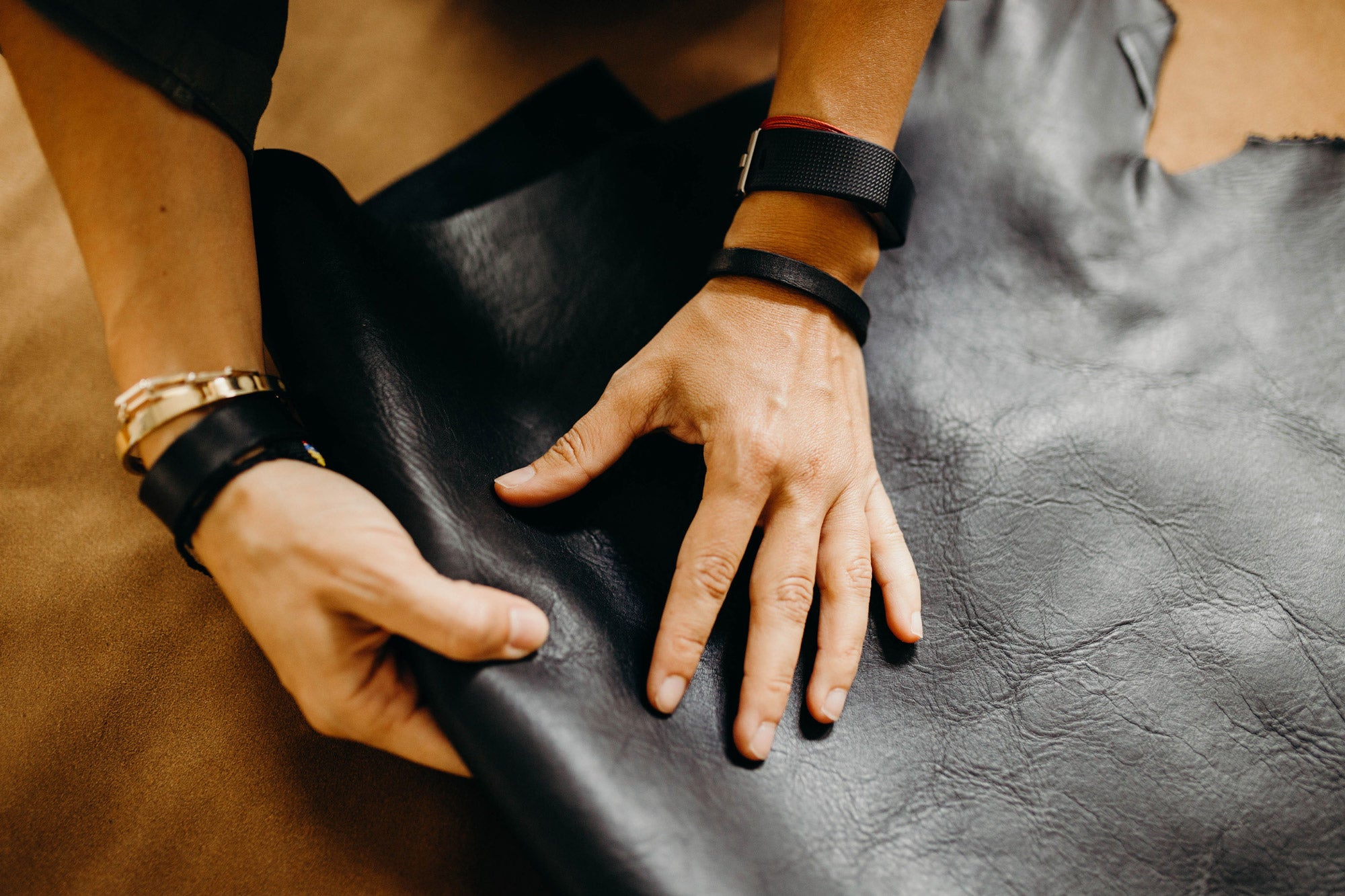
Natural Dyeing Is the Future of Leather.
Leather production is an ancient art: Since the times of the Egyptians, people have valued leather for its unique beauty and durability. The process of creating leather is called tanning, and it has been studied and refined over centuries.
Certain modern tanning processes, though, use chemicals with serious environmental and human side effects. Below is a quick guide to leather tanning with these processes, and an explanation of how some natural tanneries have refocused on sustainability.
How Leather is Tanned and Dyed.
The vast majority of all leathers are tanned and dyed using a process called chrome tanning, which requires the toxic chemical chromium. Tanneries that use this process pose risks to the environment and their workers, and they produce lower quality leathers.
- The Environmental Impact of Chrome Tanneries is Severe. Well established research “has shown that numerous chemicals released by” chrome tanneries “have harmful effects on the environment.” Toxic byproducts of chromium tanning can be released into wastewater, polluting it and causing environmental harm. And chrome tanneries use a number of other toxic chemicals that produce solid waste byproducts which can pollute “air, soil, and food.”
- Workers at Chrome Tanneries Are at Risk. The chrome-tanning process can be harmful to tannery workers. Chromium is a known carcinogen, and other tanning chemicals, like sulfuric acid and formaldehyde, are health threats. Workers at chrome tanneries are required to wear a variety of equipment to protect themselves, but illnesses and injuries can nevertheless occur.
- Chrome-tanned Leathers Are Largely Inferior to Naturally Dyed and Tanned Kinds. Chrome tanning is widely used because of its efficiency, but it produces worse products. Chrome-tanned leathers are less durable than sustainably dyed and tanned ones, and their unique markings and colors are lost.

CASUPO Uses Only Natural Dyes.
Because we’re eco-friendly and dedicated to sustainability, all our products and tanned and dyed naturally. The tannery we use is gold rated by the Leather Working Group -- a nonprofit that evaluates tanneries based on their environmental impacts -- meaning that it meets the highest standards of environmental and workers safety. Our leathers are vegetable tanned with natural colors from sources like chestnuts and tree barks, which preserves their unique beauty while protecting the environment.
Leather quality and environmental safety are important to us, and we hope they’re important to you, too. For more on how our leathers are responsibly produced and sourced, visit us here.


Leave a comment
This site is protected by hCaptcha and the hCaptcha Privacy Policy and Terms of Service apply.